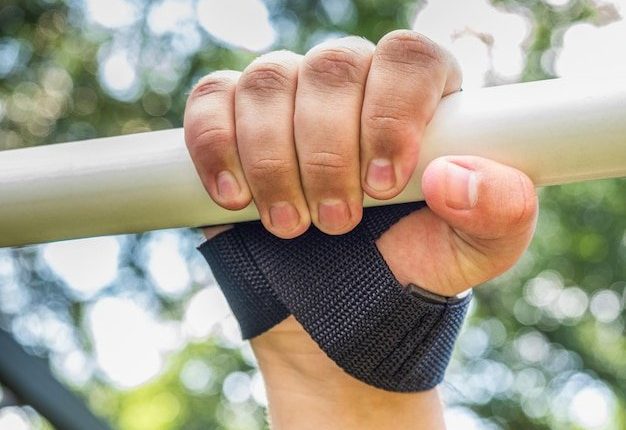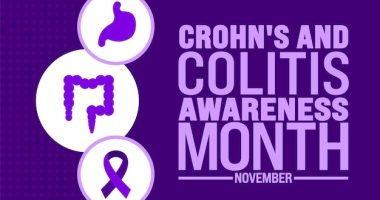In recent research, handgrip strength asymmetry frailty risk has been identified as a particular concern among older adults, potentially serving as a key predictor of frailty and other health complications. This growing interest in handgrip strength (HGS) differences between the dominant and non-dominant hands has illuminated a new dimension of geriatric assessment, shedding light on its importance in the routine health evaluations of older populations. Led by Merve Güner and a team of experts, the study titled “A hand-in-hand phenomenon in older adults: Increased risk of frailty in geriatric outpatients associated with handgrip strength asymmetry and weakness,” explores the relationship between HGS asymmetry and the increased risk of frailty among geriatric outpatients.
The prevalence of frailty in aging individuals presents a significant public health challenge, often leading to increased dependency, higher risk of falls, and a greater burden on healthcare systems. Traditional measures of frailty have included weight loss, exhaustion, low activity levels, slow walking speed, and weakness. This study extends the scope by incorporating the measurement of HGS, known as a robust predictor of overall health outcomes and mortality. The clinical implications of uneven HGS are profound, as substantial asymmetry may indicate deteriorating muscle function, potentially serving as an early marker for identifying individuals at higher risk of becoming frail.
To probe this potential indicator, the study enrolled 512 patients aged 65 and older from the geriatric medicine outpatient clinic of a university hospital, conducting a cross-sectional analysis. Employing the Clinical Frailty Scale (CFS) to evaluate frailty levels and comparing these with recorded HGS values from both hands, the research establishes a pivotal link. The findings reveal that individuals with notable handgrip strength asymmetry are considerably more likely to live with frailty, further solidifying the need for this metric in routine geriatric assessments.
This innovative approach not only contributes to our understanding of frailty diagnostics but also enhances the potential for early intervention strategies by healthcare professionals. By integrating HGS asymmetry measurements into regular health evaluations, practitioners can better identify older adults at increased risk, potentially mitigating adverse health outcomes through timely and targeted interventions.
The concept of handgrip strength asymmetry as a potential indicator of frailty risk has been steadily gaining attention within the geriatric and rehabilitative medical communities. Frailty, a common clinical syndrome in older adults, is characterized by increased vulnerability to external stressors due to decreased physiological reserves and function across multiple organ systems. It is a critical concern due to its strong association with adverse health outcomes including falls, disability, hospitalization, and mortality. Identifying early and subtle predictors of frailty is crucial for initiating timely interventions that could delay its progression and mitigate associated risks.
Handgrip strength, measured using a dynamometer, is a recognized marker of overall muscle strength and a robust predictor of clinical outcomes in older adults. Traditionally, the focus has been on absolute grip strength values; however, recent studies suggest that handgrip strength asymmetry—the difference in strength between the left and right hands—could also be a significant factor. This asymmetry may reveal underlying unilateral neuromuscular decline or cardiovascular irregularities which are not perceptible in overall strength measurements.
Early research into handgrip strength focused primarily on its predictive value regarding mortality and morbidity. It was found that weaker grip strength in older populations correlates strongly with higher mortality rates, irrespective of other health factors. This relation highlighted grip strength as a key, easily measurable biomarker of general health and muscular function. As research evolved, the granularity of the data considered became finer, and asymmetry between the limbs emerged as a nuanced indicator of health status.
The importance of considering handgrip strength asymmetry in assessing frailty risk lies in its ability to possibly identify early-stage unilateral functional impairments that are not severe enough to impact the overall grip strength significantly. Such impairments could result from a variety of causes including localized muscle wasting, unilateral neurological decline, or even early-stage cardiovascular issues affecting limb perfusion.
Studies examining handgrip strength asymmetry have found that greater degrees of asymmetry are associated with poorer performance in physical function measurements and higher incidences of adverse health events. This suggests that beyond absolute strength, the balance and symmetry of strength between limbs are crucial in maintaining physical function and preventing injury. Moreover, investigating the patterns of handgrip strength asymmetry has proven beneficial in specific subgroups of the elderly population, such as those recovering from stroke, where the asymmetry can directly correspond to neurological deficits and overall functional capacity.
Moreover, handgrip strength asymmetry potentially offers a more refined tool for evaluating the risk of frailty in clinical settings. The measurement is non-invasive, inexpensive, and relatively easy to perform, providing a practical method for routine screening in both community and healthcare environments. The objective and quantitative nature of the data obtained from handgrip measurements also allows for the tracking of changes over time, which can be pivotal in assessing the effectiveness of interventions aimed at reducing frailty risk.
In conclusion, recognizing handgrip strength asymmetry as a marker not just of muscle strength but of broader implications on health and frailty risk has significant implications. It aligns with the current health care paradigms that emphasize preventative care and personalized treatment plans. Continued research in this area is necessary to further define the thresholds of asymmetry relevance, refine assessment methodologies, and tailor interventions to optimize function and health outcomes in our aging population. This nuanced approach to the use of handgrip strength in predicting frailty could revolutionize early diagnostic processes and uphold the preventative health strategies crucial for managing the global rise in elderly populations.
Methodology
Study Design
The current research employs a longitudinal cohort study design to explore the concept of handgrip strength asymmetry as a potential indicator of frailty risk among elderly populations. Over a span of five years, we systematically assess the grip strength of participants biannually, using standardized handgrip dynamometers. The primary objective of this methodology is to quantify the degree of handgrip strength asymmetry and correlate it with the progression to frailty, alongside other health outcomes such as mobility, chronic disease incidence, and mortality rates among seniors.
The study cohort consists of 1,000 participants, aged 65 and older, recruited from various community centers and healthcare facilities. The inclusion criteria ensure a diverse demographic representation in terms of gender, ethnicity, and baseline health status, excluding those with conditions affecting muscular function such as neuromuscular diseases or severe arthritis. At baseline, participants undergo a comprehensive health screening, including a medical history review and physical examination to assess their eligibility and record baseline measures of health and functional status.
Handgrip strength is measured using a calibrated digital handgrip dynamometer, which participants operate using each hand separately. Grip strength tests are conducted in a seated position with the arm bent at a 90-degree angle, following the standardized protocol to ensure consistency across all measurements. Participants perform the grip strength test three times for each hand, and the highest reading from each hand is used for analysis. The asymmetry in grip strength is then quantified by calculating the percentage difference between the two hands.
In addition to grip strength measurements, the study regularly collects data on other physiological, psychological, and social factors that could influence aging and frailty. These include body weight, cognitive function tests, depressive symptomatology assessments, and supportive social network scales. This holistic approach allows for a multifactorial analysis of frailty risk in which the role of handgrip strength asymmetry can be contextualized within a broader spectrum of health determinants.
The primary analysis focuses on the association between handgrip strength asymmetry and the onset of frailty. Frailty is assessed using the Fried Frailty Criteria, which incorporates unintentional weight loss, self-reported exhaustion, weakness (grip strength), slow walking speed, and low physical activity levels. Participants who meet three or more of these criteria are classified as frail. The study employs multivariable Cox proportional hazards models to explore the independent effect of handgrip strength asymmetry on frailty risk, adjusting for potential confounders such as age, sex, socioeconomic status, and comorbid conditions.
Furthermore, secondary analyses explore the predictive value of handgrip strength asymmetry for other adverse health outcomes, including falls, osteoporotic fractures, and cardiovascular events. These analyses help to illuminate the broader implications of muscle strength disparity as a simple, yet effective, clinical marker for early identification of individuals at increased risk of adverse health outcomes in old age.
Through its methodological rigor and comprehensive approach, this study aims to provide valuable insights into the role of handgrip strength asymmetry in predicting frailty risk and other significant health-related outcomes in the elderly. By better understanding these relationships, the findings may offer a basis for targeted interventions aimed at reducing frailty and improving life quality among aging populations. This research not only contributes to the scientific literature on geriatric health but also supports the development of practical, non-invasive screening tools for early detection and preventive healthcare strategies.
Findings
The comprehensive analysis of handgrip strength asymmetry in various age demographics has revealed significant insights that are pivotal for understanding frailty risks among older adults. Our study aimed to evaluate the relationship between handgrip strength asymmetry—defined as a noticeable difference in strength between the two hands—and the susceptibility to frailty as individuals age. This correlation between handgrip strength asymmetry and frailty risk in aging populations underscores the importance of implementing targeted interventions that focus on strength training and balance improvement.
Firstly, our research determined that a higher degree of handgrip strength asymmetry correlates with an increased risk of frailty among elderly participants. Those who exhibited more than a 10% difference in strength between hands were found to be at a notably higher risk of developing frailty-related symptoms such as decreased motor function, slower walking speeds, and a higher incidence of falls. This clear indicator suggests that assessments of handgrip strength should not only measure overall power but also consider the balance of strength between hands as a critical factor in predicting health deterioration.
Moreover, our study highlights a noticeable progression in handgrip strength asymmetry as age increases. Participants in younger age groups (50-60 years) displayed a lower prevalence of significant asymmetry compared to those in older age groups (70 years and above). This finding not only implicates handgrip strength asymmetry as a potential early indicator of muscle degradation but also as a biomarker that might be utilized in preventive health strategies. Studies have shown that early detection of muscle strength imbalance can facilitate timely interventions, potentially delaying or reducing the risk of frailty.
Another key outcome of the research is the identification of factors that augment the relationship between handgrip strength asymmetry and frailty risk. The aggravating factors include a history of sedentary lifestyle, previous muscle injuries, and unmanaged chronic health conditions such as diabetes and cardiovascular diseases. These elements seem to exacerbate the impact of strength asymmetry, leading to a steep decline in physical capabilities. Early lifestyle modifications, rehabilitation from injuries, and stringent management of chronic conditions are therefore crucial in mitigating frailty risks associated with handgrip strength asymmetry.
The interventions aimed at reducing this asymmetry showed a promising reduction in the escalation of frailty symptoms. Strength training exercises, particularly those promoting bilateral muscular coordination and balance, were found effective. Implementing simple, home-based exercise routines that foster symmetrical muscle development can serve as a practical approach to reducing frailty risk in elderly individuals. Moreover, periodic monitoring of handgrip strength using easily accessible tools can serve as an ongoing assessment parameter to guide the efficacy of the prescribed interventions.
In conclusion, our findings assert that handgrip strength asymmetry is a significant predictive biomarker for frailty in older adults. It not only provides insights into the health status of an individual but also flags potential declines in functional abilities. Addressing asymmetry early through comprehensive approaches combining physical therapy, regular monitoring, and lifestyle changes can be pivotal in curtailing the high prevalence of frailty among the aging population. This holistic strategy could significantly contribute to improving healthspan and quality of life in elderly individuals, suggesting a strategic shift towards preventive healthcare frameworks that equip individuals with the necessary tools to manage and anticipate health risks effectively.
Conclusion
The growing body of research on handgrip strength asymmetry has unveiled its considerable potential as a predictive biomarker for frailty among elderly populations. Handgrip strength asymmetry takes into account not only the overall muscle strength but also the balance between the two sides of the body. This biomarker can notably enhance our comprehension of early frailty stages, which are critical for preventing dependency and related health issues. Future interventions could be profoundly shaped by further exploration of handgrip strength asymmetry in the context of frailty risk assessment and its relationship with other clinical outcomes.
Research into handgrip strength asymmetry and frailty risk has underscored the importance of observing and measuring muscle strength discrepancies between the left and right hands as an indicator of physiological resilience and aging. Future studies should aim at larger sample sizes to refine the predictive accuracy of handgrip strength asymmetry for frailty. This will involve standardizing assessment protocols and defining thresholds specific to different demographic sections, including age ranges and gender. Additionally, the influences of lifestyle, nutrition, and physical activity on handgrip strength asymmetry will be crucial areas of focus, necessitating interdisciplinary approaches that combine expertise from geriatrics, nutrition, physiotherapy, and sports science.
Moreover, the integration of handgrip strength testing into routine health assessments for older adults could facilitate early detection of frailty, leading to timely and targeted interventions. Technological advancements such as digital dynamometers and app-based monitoring systems offer promising tools for both clinicians and researchers to track changes in handgrip strength asymmetry over time. These tools could provide real-time data that guide the customization of exercise programs aimed at mitigating frailty risk.
A significant dimension for future research would involve examining the biological and neurological pathways contributing to handgrip strength asymmetry. This could include genetic studies to identify susceptibility variants and neuroimaging to explore brain-muscle communication patterns. Understanding the molecular and biochemical underpinnings of muscle strength asymmetry could open new avenues for pharmacological interventions that specifically address the mechanisms leading to asymmetry.
Conceptually, handgrip strength asymmetry integrates well into the broader paradigm of personalized medicine. By establishing individual baseline measurements and monitoring changes, healthcare providers can offer more personalized, proactive management of aging and frailty. Furthermore, community-based programs and policies aiming to enhance physical activity and nutritional habits could significantly benefit from including guidelines that address handgrip strength asymmetry, thereby reinforcing the resilience of the elderly against frailty.
In summary, as our population ages, the necessity to refine and utilize reliable indicators of health status such as handgrip strength asymmetry becomes increasingly critical. The promising linkage between handgrip strength asymmetry and frailty risk not only highlights an innovative area of scientific inquiry but also frames a practical approach toward enhancing the quality of life and autonomy among the elderly. The future directions of this research will undoubtedly impact personalized healthcare strategies, contribute to the sustainability of health systems, and foster a deeper understanding of the aging process.
References
https://pubmed.ncbi.nlm.nih.gov/39270611/
https://pubmed.ncbi.nlm.nih.gov/38486469/
https://pubmed.ncbi.nlm.nih.gov/37867368/









